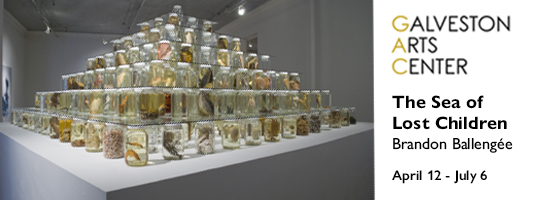The Houston Symphony will end its season with a splash: a two-weekend festival devoted to Richard Strauss, whose name is practically synonymous with sonic spectacle.
Yet a lyrical streak ran through many of Strauss’ creations, and it came to the fore as his long life progressed. His last works look at the world with a serene, philosophical glow.
The Houston Symphony, led by music director Juraj Valčuha, will sample the whole range. The first program (June 1 and 2) will include An Alpine Symphony, which depicts a mountain-climbing expedition in the musical equivalent of IMAX, and the lush Four Last Songs. The second weekend (June 7 and 9) will bring a semi-staged Salome, with the orchestra onstage to deliver Strauss’ walloping, seductive score in all its vividness.
Valčuha and the orchestra have developed a penchant for mini-festivals—such as the recent Tragedy & Triumph, featuring composers from Mozart to Missy Mazzoli. When they decided to spotlight Strauss, they set their sights on more than the Houston audience: They bore in mind that the festival would come as the Houston Symphony hosts the annual conference of the League of American Orchestras. Roughly 1,000 administrators, board members, musicians and other stakeholders will descend on Houston in time to see Salome.
“We knew we would host the League conference, and we were thinking about something that would … show off the orchestra well,” says Rebecca Zabinski, the orchestra’s artistic administrator. “We settled on Strauss. There’s so much there for the orchestra, and such beautiful, lush music. We thought we could make it into a powerful season ending.”
Strauss’ music figures into most every Houston Symphony season, of course. For the festival, the orchestra has looked beyond the likes of Don Juan. “We wanted something new,” Zabinski says, “and we wanted something special.”

1 ⁄4
Juraj Valčuha conducts the Houston Symphony in Ravel’s La Valse. Photo by Melissa Taylor.

2⁄4
Jennifer Holloway; Photo courtesy of the artist.

3 ⁄4
Rachel Willis-Sørensen; Photo courtesy of the artist.

4 ⁄4
Juraj Valčuha conducts the Houston Symphony in Ravel’s La Valse. Photo by Melissa Taylor.
“It’s a huge orchestra,” Zabinski says. “I can’t think of many other compositions that require an orchestra of this size.” The cost and logistical issues, she adds, explain why orchestras tackle An Alpine Symphony so rarely: The Houston Symphony hasn’t played it since 2008.
When An Alpine Symphony does make it to the concert hall, it takes the audience on an action-packed 50-minute adventure. Strauss unleashes all his tone-painting ingenuity to describe the entire excursion, including a burst of orchestral splendor describing sunrise; a hale-and-hearty string tune as the climbers set off; glittering winds depicting a waterfall; the orchestra’s full majesty again at the peak; snarling brasses and slashing strings as a storm interrupts the descent; and a glowing, lyrical meditation at sunset.
An Alpine Symphony, with all its theatrics, stands at the opposite extreme from the octogenarian Strauss’ mellow, philosophical Four Last Songs. Or does it? Consider this: The Four Last Songs also closes with a serene sunset reverie. This one springs from a poem that describes a couple looking peacefully toward death after they’ve shared life’s long journey.
The Strauss festival performances will feature Rachel Willis-Sørensen, an alumnus of the Houston Grand Opera Studio who boasts a burgeoning career with the Vienna State Opera, Paris Opera and other top companies. Thanks to her “beautiful voice,” Zabinski says, Willis-Sørensen is “singing repertoire like this with conductors everywhere.” Zabinski adds that the Four Last Songs’ presence in the festival will tip a hat to the Houston Symphony’s 1995 recording with Renée Fleming, who became one of the work’s most acclaimed proponents.
That first festival program will open with even more of a rarity than An Alpine Symphony: “Dreaming by the Fireside,” a melodious interlude from Strauss’ opera Intermezzo. Little-known in the United States, Intermezzo is a comedy inspired by a real-life tiff between Strauss and his wife. It centers on a composer named Robert Storch. Robert Storch-Richard Strauss, get it? Dominated by the orchestra’s strings, “Dreaming by the Fireside” is as cozy and warm as its title suggests.
Nobody looks for much coziness in Salome, set for the festival’s second week. Based on the biblical story of the Judean princess who ends up claiming the head of John the Baptist—as expanded into a tale of lust and obsession by Oscar Wilde, whose play underlies the libretto—Salome scandalized some viewers when it premiered in 1905. Its story wasn’t the only jolt: Listeners were hardly prepared for the sonic and harmonic ferocity of the score’s most tumultuous moments.
Playing the obsessed young princess “requires a really special artist, because it has to be a mature voice that can handle a role of this magnitude, but can also come across as a 16-year-old girl in the context of the story,” Zabinski says. “There’s a really small list of singers who sing this at a high level.”
The Houston Symphony has chosen Jennifer Holloway, an American soprano who keeps busy mainly with European companies such as Germany’s Bavarian State Opera. “Juraj knows Jennifer from his work in Europe,” Zabinski says. “She was our first choice, and we’re thrilled to welcome her for her (Houston Symphony) debut.”
“One of the most important things for us … is keeping the orchestra onstage, and treating them as a character in the opera,” Zabinski says. “One of the hallmarks of Strauss is vivid orchestration—the detail in the orchestra and all of the parts. There is so much for the orchestra and Juraj to work on together. … Playing repertoire like this is not something they get to do every day, even as professional musicians. So it’s special for everyone.”
-STEVEN BROWN






